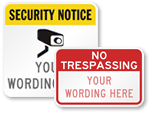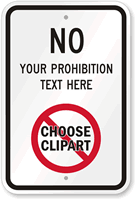How to start your own neighborhood watch group
Each year, over 10 million property and violent crimes are reported to U.S. law enforcement. Does that number seem staggering? Consider all of the crimes that went unreported, the cases left unclosed.
It’s no surprise, then, that vigilant citizens have come together to form around 90,000 neighborhood watch groups across the country. These groups keep an eye out for their communities and foster close relationships among neighbors. They also typically reduce the rate of minor offenses in their respective neighborhoods.
Best of all, starting a neighborhood watch group is easy, regardless of where you live. Here are some important steps to take if you hope to get your own group off the ground.
Take Initiative
- Discuss the possibility of starting a group with your neighbors to determine the level of interest. They may not be aware that such a group doesn’t exist already or is even needed.
- Circulate an email petition after a publicized local crime. Remind community members of the importance of a neighborhood watch group.
- Seek out advice from law enforcement officials. Some may want to lead or participate in the group. Their knowledge about local crime will prove useful.
Plan and Organize
- Once you’ve gauged community members’ interest, set up your first meeting. It doesn’t need to be fancy — a meet-and-greet with a quick overview of expectations and goals works.
- Maintain a newsletter or email thread that updates the community about local events. Group members need to remain informed.
- Encourage members to be vigilant. They must report any suspicious activity that they see to law enforcement.
- Delegate positions. It’s important to have established roles for certain members, like street captains, a law enforcement liaison, a group coordinator and so on.
Hold Regular Meetings
- Designate a specific time and place for meetings. See when and where is best for most people.
- Keep it low-key and enjoyable. Let neighbors learn about protecting community members as they mingle with each other. Picnics, barbecues and pool parties are all potential ideas for summer meetings.
- Invite as many people as possible. Distribute invitations door to door and email everyone you know in your area.
- Produce an agenda with suggested conversation topics. Make sure that speakers can discuss issues they care about.
- Don’t always rely on meetings to keep the group together. To keep things fresh, offer other activities, such as fundraising events or garage sales.
Category: Neighborhood Watch















